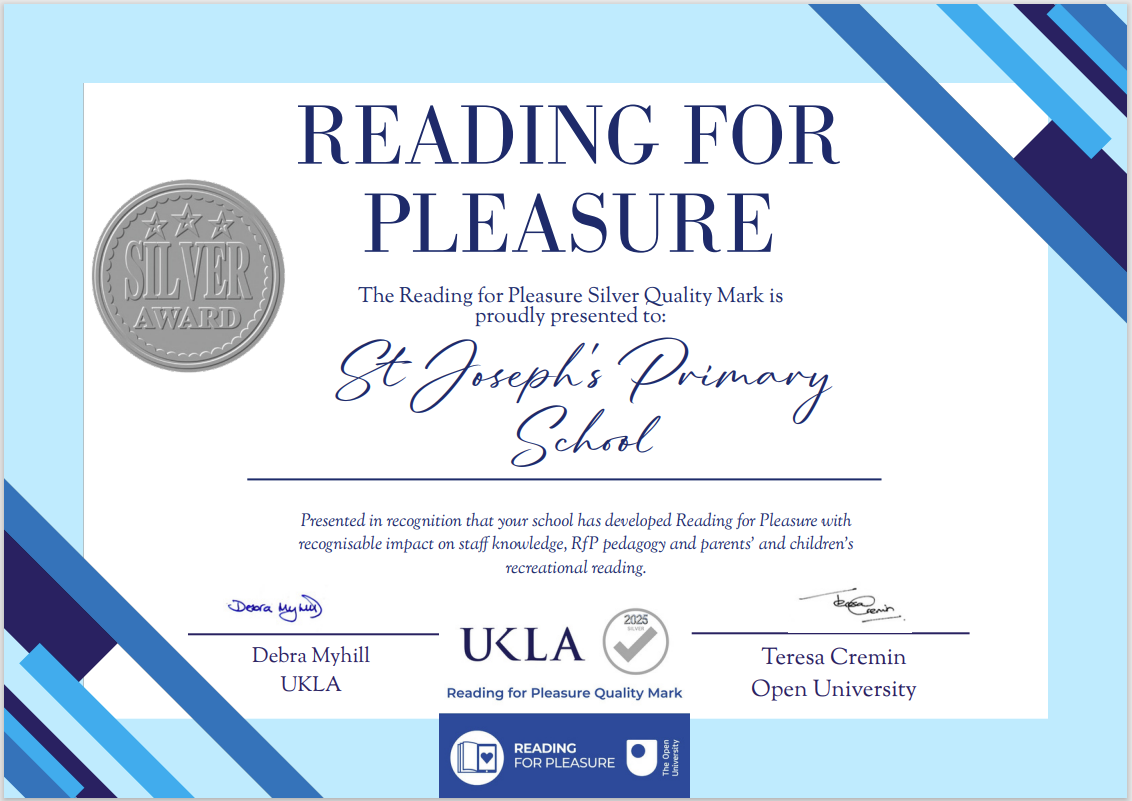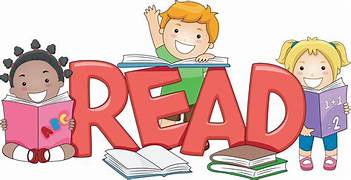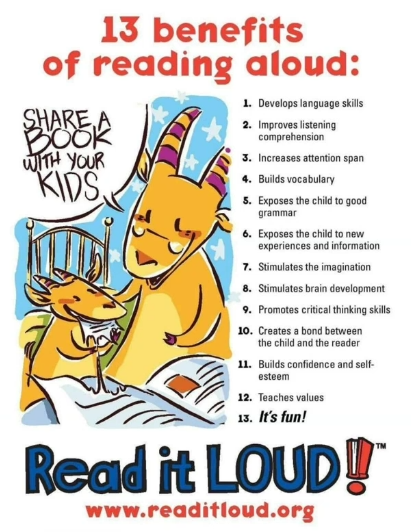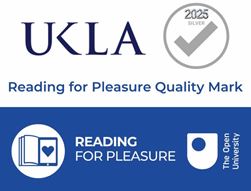📖English
July 2025
We are delighted to have been awarded the Silver Award for Reading for Pleasure Quality Mark.

Reading at St. Joseph's
St Joseph's RC Academy is determined that every child will learn to read, regardless of background, needs or abilities. We want our children to be fluent, confident readers. They will be exposed to a wealth of stories, poems, rhymes and non-fiction to develop their vocabulary, language comprehension and engender a genuine love of reading and a keen interest in a range of texts. We work to inspire them to become life-long readers who enjoy books and have a desire to read for pleasure.
In order for our children to have the will to read, and be able to read to learn, they need to have secure skills in reading so that they can read with fluency and comprehension. Reading is at the heart of our whole curriculum, underpinning every subject area. We want every child to read widely, and to gain rich knowledge across the curriculum. By offering a wide range of texts, we aim to broaden their minds and experiences to allow them to empathise with the world in which they live and support the development of their cultural capital. Reading is such an important life skill that it is imperative we enable them to become independent readers who can easily process information, fully engage in all learning and be well-prepared for their next stage of their education.

How We Teach Phonics
We teach early reading through the systematic, synthetic phonics programme Read, Write Inc. Right from the start of Reception children have a daily phonics lesson which follows the progression for Read, Write Inc and this continues in Year One to ensure children become fluent readers.
How you can help your child read at home.

We greatly appreciate the time parents and carers give to listen to readers at home.
Ideally children should read with you for approximately 5-10 minutes each day. Depending on the child, these 5-10 minutes should be a combination of listening to the child read aloud and then a discussion about what they have read using some of the questions shown here. It can also be useful at times for you to model ‘smooth reading’ for your child.
There are also ideas for strategies the children can try when they are struggling to decode new words. The children need to have the opportunity to have a go at decoding new or tricky words using some of these strategies. At the same time, don’t let them struggle unnecessarily. You can help them by modelling the strategies, for example, how to sound the word out or clues from the page or text.
Reading strategies
- When I am reading something, I can use the following things to help me:
- I use the pictures to help me
- I sound out/blend words I don’t know C-A-R-P-E-T car-pet carpet
- I look for smaller words inside words. “tEACHer”
- I can break word down into syllables “en – joy – able” “Enjoyable”
- I use punctuation to help me make sense of what I am reading
- I go back and read a word or sentence again if I don’t understand it.
- I read on to see if I can work out the meaning of a word I don’t know.
- I listen to what I am reading to see if it makes sense.
- I check that I am right by going back to look at words carefully.
- I can tell when I’ve made a mistake and go back to try and put it right.
- I ask questions to help me with my reading if I don’t understand.
- I talk through my ideas, thoughts and feelings about what I’m reading.
- I think about what might happen in the book and I can say why.
- When I read, I imagine what is happening and create a picture in my mind.
- I use words I can see around me or that I have read before.
Questions you could ask your child about what they have read
Vocabulary:
- What word in the text tells you that……….?
- Which words/phrases make you think/feel?
- What other words/phrases could the author have used instead?
Retrieval:
- Which? What? When? Where? Why? Who? How?
- Where/when does ……. take place?
- What did …….. look like?
- Can you say if (point from the text) is true or false?
- Can you give evidence to support your opinion>
- Can you give two reasons why…………….?
Sequence and summarise:
- What happened after…..?
- What happened before…..?
- Can you summarise (the paragraph/page/chapter..) in one sentence?
Inference:
- Why do you think………?
- True or false?
- What evidence is there that/of ……………
Prediction:
- What do you think will happen if?
- What do you think will happen to? Why do you think this?
- Do you think that ……. will…….? Explain using evidence from the text.
Writing at St. Joseph's

Handwriting
Handwriting and presentation are an important part of the school curriculum.
It helps children to foster a pride in their own work, take ownership for it and helps to raise standards.
Our aims are:
- For children to achieve a neat, fluent and legible style of joined handwriting.
- To take pride in their work and know what is expected of them.
- To be consistent in their quality of work.
Writing
Literacy and communication are key life skills. Through our English curriculum, we will enable our pupils to be lifelong learners, through the teaching of the spoken and written language.
We aim to offer an English curriculum that builds on skills, enables the children to work creatively and become independent.
Children will be exposed to a rich variety of literature and encouraged to appreciate literature and foster a love of reading.
Our aims:
- To promote and develop children’s enthusiasm for literacy and to provide them with an essential life skill.
- To help pupils understand the thoughts of others through writing.
- To allow children to express their thoughts and ideas.
- To develop writing stamina and fluency.
- To be able to write in a range of genres by planning, drafting, editing and refining.
- Have a versatile and flexible use of the English Language.
Please have a look at our Subject intent, overviews and progression documents for English.

